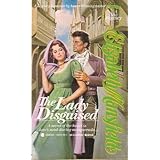Bright Star

Bright Star is a recent movie about the love story between the nineteenth century Romantic poet John Keats, and his neighbor, Fanny Brawne. It stars Abbie Cornish as Fanny and Ben Wishaw as Keats. John Keats and Fanny Brawne first meet in 1818, when he moves to the neighborhood to nurse his ill brother and compose poetry with his friend Mr. Charles Brown. Keats is an up and coming poet and Fanny is curious about him and makes it her business to meet him and study his character. At first John Keats finds Fanny a saucy mix and Brown cautions Keats that Fanny is only interested in flirting and fashion, but soon Keats is drawn to Fanny's compassion and interest in learning poetry. The two soon become infatuated with each other until John's poor health tears them apart. This love story is about star-crossed lovers, rather like Romeo and Juliet, who get caught up in romance despite forces that keep them apart (in this case, lack of money and fatal illness). The passion and intensity of their relationship rivals Romeo and Juliet. Fanny is bright, curious and passionate. Fanny comes across as both charming and annoying as she gets swept up by her passions, which run the full gamut from love to loss. She is played brilliantly by Abby Cornish who is wonderfully bouncy and flirty as as well as deeply emotional. Fanny's emotional outbursts are acted with incredible feeling and intensity but I just didn't find Fanny a sympathetic character. She was way too obsessed with Keats and their romance and whenever he wasn't around, she had a nervous breakdown and fell into a decline. She is not, however, a stalker, as one reviewer labeled her, but she does act like a typical teenage girl in the throes of her first crush. If you can empathize with that, then you will probably like Fanny. I thought she was silly and over-the-top dramatic.John Keats is quiet and brooding and falls in love with Fanny's compassion and enthusiasm. Ben Wishaw's Keats is dark, good looking and brooding and his romantic poetry is enough to make any 19th century heroine (or wannabe) swoon, but as with Fanny, I found him obsessive and emotional and didn't really feel anything for him until the end. Wishaw's Keats is also too healthy-looking for a man who is suffering from Consumption. Wishaw really shines at the end of the movie when the young lovers must be separated for the sake of John's health and John knows this is the final goodbye. The scene is sweetly romantic and heartbreaking at the same time. Keats is a moral man but his behavior pushes the limits propriety for those days though he's aided by Fanny who is so in love, she ignores the world around her in favor of her love.I just couldn't get really carried away by the love story. I didn't understand why Fanny was attracted to Keats in the first place nor why he was so enraptured by her. The story is a little lacking in my opinion, but I've grown cynical in my old age. When I was a teenager, I probably would have loved this movie.Visually, this movie is wonderful. The filming location makes the perfect 19th century village and the spring and summer scenery is breathtaking. The domestic scenes are also very natural and normal and provide the viewer with a glimpse into the domestic life of country families. I also loved one scene involving butterflies, which was beautiful. I loved the costumes, especially those belonging to Fanny, who was an amateur fashion designer. She designed and made all of her own clothes and they reflect her personality. Overall, I was slightly disappointed that I didn't like the movie more. I watched it twice to try to form a second opinion but my first opinion remained. The trailers show the best parts of the film. I would recommend the movie for 19th century fanatics and die-hard romantics. Learn more about the movie at the Official U.S. Site or the Better U.K. site BRIGHT STAR, WOULD I WERE STEDFAST
By John Keats
Bright star, would I were stedfast as thou art---Not in lone splendour hung aloft the nightAnd watching, with eternal lids apart,Like nature's patient, sleepless Eremite,The moving waters at their priestlike taskOf pure ablution round earth's human shores,Or gazing on the new soft-fallen maskOf snow upon the mountains and the moors---No---yet still stedfast, still unchangeable,Pillowed upon my fair love's ripening breast,To feel for ever its soft fall and swell,Awake for ever in a sweet unrest,Still, still to hear her tender-taken breath,And so live ever---or else swoon in death.
What I've Read This Week . . .
Indescr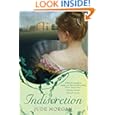 etion by Jude Morgan -- Regency Fiction
etion by Jude Morgan -- Regency Fiction
Miss Caroline Fortune has the unlucky happenstance to have such a name and such fortune. Her long-deceased mother was cut off from her country gentry family when she married a young Army Captain and was not cut out for such a rough life. Caroline's father was wounded in the Peninsular Wars and now dreams and schemes about reversing his misfortune. Alas for poor Caroline, her father has just lost his last shillings and she is forced to go to work as a companion for Mrs. Catling, a wealthy dragon of a lady who cares for no one, most especially not her niece and nephew who hope to inherit her money. After brief mistrust on both sides, Caroline quickly befriends Matthew and Maria and Caroline becomes the recipient of secret confidences which could cause trouble if the secrets were to be known to Mrs. Catling. Poor burdened Caroline would rather flirt with the handsome Mr. Richard Leabrook, a recent acquaintance who came to Brighton with Matthew and Maria. Circumstances cause Caroline to lose her position but some good fortune comes her way when her estranged maternal aunt and uncle take Caroline home to their country village. There. Caroline becomes involved with the Miner family, local gentry for whom Caroline's uncle is rector. The head of the family, Stephen, puzzles and infuriates Caroline with his constant irony and sarcastic, witty comments. Isabella Miner instantly becomes a bosom friend and headstrong little sister Fanny hero-worships Caroline for living a life outside of convention. Caroline becomes the source of more confidences and the cause of much trouble. All Caroline wants is a settled life and a man she can count on and give her heart to. Is that too much to ask? In the tradition of Jane Austen, Indiscretion is a comedy of manners that had me laughing out loud. The humor is a little more worldly than Austen's and some lines could be construed as double entendres but Austen fans will enjoy reading about some familiar characters and situations in a completely new story. The plot had me guessing almost the whole time, I couldn't put it down and absolutely loved it. I was a bit startled out of my equilibrium by some passages in present tense but they don't take away from the appeal of this novel, which Austen lovers should definitely read!
 Enthusiasm by Polly Shulman -- Austenesque YA Romantic Comedy
As recommended by my friend Irish
Julie's best friend Ashleigh is an enthusiast. She throws herself into her unusual hobbies so completely, she loses sight of all reason. In her fifteen years she has wanted to be a knight, a candy maker, and now a Jane Austen heroine. Poor Julie, always a loyal friend, gets dragged along into Ashleigh's schemes for better or for worse. Ashleigh decides that in order to find True Love, she and Julie are going to crash a school dance at a local boys' prep school. On the verge of being tossed out of the boys' school for gate-crashing, they are rescued by their very own Mr. Darcy and Mr. Bingley. Unfortunately, the one thing Jane Austen did not write about is what happens when both girls fall in love with Mr. Darcy! Julie decides to be noble and try to ignore her feelings for her Mr. Darcy, but it's not easy when Ashleigh gets them involved in the boys' school musical! To complicate matters further, there's another suitor vying for Julie's attention (Mr. Collins maybe?) and even a high school Mr. Wickham preying on girls. There's a lot of miscommunication, embarrassing situations and angsty moments before the love knot can be untangled and Julie finds her Mr. Darcy. I liked the premise of the book and Ashleigh is an exaggerated version of me. I can totally see myself doing some of the things she does, short of crashing a dance and I absolutely loved the dancing scenes, thanks to my experience at a local Regency dance event. Though Julie is more quiet than Ashleigh, she has normal teenage problems and not so normal teenage problems, which make her more realistic and appealing than her friend. The boys are too good to be true but charming in their own way. There are some cute laugh-out-loud moments and sweet romantic moments that make this a good read for any girl who has ever dreamed of finding her own Mr. Darcy! If you like The Princess Diaries series, by Meg Cabot you will also enjoy this book.
Enthusiasm by Polly Shulman -- Austenesque YA Romantic Comedy
As recommended by my friend Irish
Julie's best friend Ashleigh is an enthusiast. She throws herself into her unusual hobbies so completely, she loses sight of all reason. In her fifteen years she has wanted to be a knight, a candy maker, and now a Jane Austen heroine. Poor Julie, always a loyal friend, gets dragged along into Ashleigh's schemes for better or for worse. Ashleigh decides that in order to find True Love, she and Julie are going to crash a school dance at a local boys' prep school. On the verge of being tossed out of the boys' school for gate-crashing, they are rescued by their very own Mr. Darcy and Mr. Bingley. Unfortunately, the one thing Jane Austen did not write about is what happens when both girls fall in love with Mr. Darcy! Julie decides to be noble and try to ignore her feelings for her Mr. Darcy, but it's not easy when Ashleigh gets them involved in the boys' school musical! To complicate matters further, there's another suitor vying for Julie's attention (Mr. Collins maybe?) and even a high school Mr. Wickham preying on girls. There's a lot of miscommunication, embarrassing situations and angsty moments before the love knot can be untangled and Julie finds her Mr. Darcy. I liked the premise of the book and Ashleigh is an exaggerated version of me. I can totally see myself doing some of the things she does, short of crashing a dance and I absolutely loved the dancing scenes, thanks to my experience at a local Regency dance event. Though Julie is more quiet than Ashleigh, she has normal teenage problems and not so normal teenage problems, which make her more realistic and appealing than her friend. The boys are too good to be true but charming in their own way. There are some cute laugh-out-loud moments and sweet romantic moments that make this a good read for any girl who has ever dreamed of finding her own Mr. Darcy! If you like The Princess Diaries series, by Meg Cabot you will also enjoy this book.
 Hazel: A Novel by Julie Hearn -- YA Historical Fiction
Hazel is 13 in 1913 and is privileged to be the daughter of a gentleman In Sugar. She adores her Daddy, who tells her stories about how he met her beautiful, former artist's model mother at the Battersea dog shelter and fell instantly in love. Hazel is sheltered and comfortable in her world but on June 4, she tumbles into young adulthood when she witnesses a woman being trampled by the King's horse at the Epsom Derby. The woman was a suffragist, something had never heard about or thought of until that moment. Another crack in Hazel's easy existence comes soon after, when her beloved father suffers financial reversal and a nervous breakdown. Hazel is kept in ignorance of the true facts and carries on as if her father will return home shortly and everything will be the same. She continues to attend the Kensington School for the Daughters of Gentlemen, where her teachers censor Shakespeare and collect nature specimens. The new girl at school, Gloria, stirs things up and introduces Hazel to thoughts and feelings Hazel has never experienced before. Hazel's crush on Gloria and her new-found interest in women's suffrage cause Hazel to create a scandal which results in her being shipped off to her grandparents' sugar plantation in the Caribbean where mysterious and uncomfortable events of long ago resurface and Hazel makes the final transition into young adulthood. This is an unusual coming-of-age novel about a little girl who seems much older than 13. Hazel is very young and naive and her actions reflect that, but she seems rather young to be the heroine of the plot. I kept thinking she was 16 or older. Gloria, especially seems too old to be in school. I also didn't understand why the teachers didn't use the Bowlderized editions of Shakespeare, which would of course take away some of the incidents that transition Hazel from girlhood to young adulthood. Her family secrets can be easily guessed by any reader who knows enough about the history of African peoples transplanted to European societies. Hazel matures rather quickly and the ending is rather rushed and abrupt. I have mixed feelings about this book. I didn't really care for it and most of Hazel's coming-of-age seemed unrealistic and over-the-top. The proper young miss shedding the confines of her stuffy society plot has been done so many times before and it's a plot I normally like but I just couldn't find Hazel sympathetic or interesting. This is a sequel to Hearn's previous novel, Ivy, but enough background information is given for this book to stand on it's own. If you liked In The Company of Swans by Eva Ibbotson, you will probably like Hazel, though it's not a romance.
Hazel: A Novel by Julie Hearn -- YA Historical Fiction
Hazel is 13 in 1913 and is privileged to be the daughter of a gentleman In Sugar. She adores her Daddy, who tells her stories about how he met her beautiful, former artist's model mother at the Battersea dog shelter and fell instantly in love. Hazel is sheltered and comfortable in her world but on June 4, she tumbles into young adulthood when she witnesses a woman being trampled by the King's horse at the Epsom Derby. The woman was a suffragist, something had never heard about or thought of until that moment. Another crack in Hazel's easy existence comes soon after, when her beloved father suffers financial reversal and a nervous breakdown. Hazel is kept in ignorance of the true facts and carries on as if her father will return home shortly and everything will be the same. She continues to attend the Kensington School for the Daughters of Gentlemen, where her teachers censor Shakespeare and collect nature specimens. The new girl at school, Gloria, stirs things up and introduces Hazel to thoughts and feelings Hazel has never experienced before. Hazel's crush on Gloria and her new-found interest in women's suffrage cause Hazel to create a scandal which results in her being shipped off to her grandparents' sugar plantation in the Caribbean where mysterious and uncomfortable events of long ago resurface and Hazel makes the final transition into young adulthood. This is an unusual coming-of-age novel about a little girl who seems much older than 13. Hazel is very young and naive and her actions reflect that, but she seems rather young to be the heroine of the plot. I kept thinking she was 16 or older. Gloria, especially seems too old to be in school. I also didn't understand why the teachers didn't use the Bowlderized editions of Shakespeare, which would of course take away some of the incidents that transition Hazel from girlhood to young adulthood. Her family secrets can be easily guessed by any reader who knows enough about the history of African peoples transplanted to European societies. Hazel matures rather quickly and the ending is rather rushed and abrupt. I have mixed feelings about this book. I didn't really care for it and most of Hazel's coming-of-age seemed unrealistic and over-the-top. The proper young miss shedding the confines of her stuffy society plot has been done so many times before and it's a plot I normally like but I just couldn't find Hazel sympathetic or interesting. This is a sequel to Hearn's previous novel, Ivy, but enough background information is given for this book to stand on it's own. If you liked In The Company of Swans by Eva Ibbotson, you will probably like Hazel, though it's not a romance.
What I've Read This Week . . .
An Acc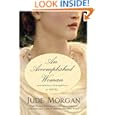 omplished Woman by Jude Morgan -- Regency Fiction
Though set in 1799, this book could have been written by Jane Austen or Georgette Heyer, therefore, I place it in the Regency category.
omplished Woman by Jude Morgan -- Regency Fiction
Though set in 1799, this book could have been written by Jane Austen or Georgette Heyer, therefore, I place it in the Regency category.
Thirty year-old Lydia Templeton in as accomplished woman, a bluestocking, well-educated in the classics and coolly determined not to let her heart, or any man, rule her. Though Lydia dreams of travel, she is happy at home with her father in the country,writing literary criticism and trading verbal jabs with their cynical bachelor neighbor, Lewis Durrant, whose hand she rejected nine years ago. Lydia is reluctantly talked into chaperoning her godmother's ward, the beautiful young heiress Phoebe Rae, in Bath in order to help the young woman choose between two suitors. Mr. Durrant has also come to Bath in search of a wife in order to cut his extravagant nephew out of an inheritance. Soon Lydia and Phoebe are involved in a social whirl, making new acquaintances and forming and reforming opinions of old ones. Finally, Lydia discovers that she has a heart after all. The first half of this novel reads very much like a Jane Austen novel. It reminded me a lot of Emma. However, the pace is extraordinarily slow and not much happens, much like Emma. The second half of the novel could be a new Georgette Heyer novel with romantic entanglements and quirky characters. None of the characters really appealed much to me though. As much as I really wanted to like Lydia, I found her too cynical and hardened to be the heroine of a romance. I would have preferred it if she didn't make the decision she did. The ending of the story almost belonged to a different book entirely. Many of the characters were reminiscent of Jane Austen characters and there are a few little winks to Jane Austen fans who will immediately recognize the references. I think this is a good read for Jane Austen and Georgette Heyer fans. Those who prefer the more modern, sweet (or spicy) romance novels would do best to avoid this one.
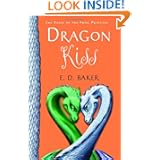
Dragon Kiss (Tales of the Frog Princess) by E.D. Baker -- Middle Grades Fantasy
Audun is an ice dragon who has lived for 15 years in the Icy North without ever meeting anyone outside his own dragon family. Just a few weeks ago, Princess Millie, the human/dragon daughter of Princess Emma and Prince Eadric, saved Audun and his family from an evil spell and now Audun is madly in love with Millie. Of course their families object to the match and Millie is taken away from Audun. Audun turns to the Dragon King for help in learning to become human. Before that can happen, Audun must complete three dangerous tasks for the Dragon King and avoid being trapped into marriage with a lovely young Dragoness. Audun learns that being human means more than changing his body and it's up to him to help the dragons with one more difficult task before he can return to Millie and seek her hand in marriage. This is the 7th (and second-to-last) novel in the series but works well as a stand-alone. The plot is overloaded with adventure, danger and sprinkled with humor. There are lots of new wacky characters to enjoy and some old ones too. Audun's story is a classic hero/coming-of-age tale told in an unusual way. I can't wait to find out what happens next!
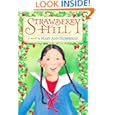 Strawberry Hill by Mary Ann Hoberman -- Middle Grades Historical Fiction
Because of the Great Depression, Allie's dad loses his job in New Haven and takes a new one in Stamford. Allie, her little brother and their mother must leave their apartment and move to a new home in Stamford. At first Allie doesn't want to leave her best friend Ruthie and their cozy apartment, but she's cheered by the prospect of living on a street named Strawberry Hill. Strawberry Hill turns out to be rather disappointing for Allie but soon she makes friends with Martha, the Catholic girl next door. Martha tells Allie that the other Jewish girl in the neighborhood, Mimi, is a "crybaby" and Martha avoids her. Allie is excited to have a new friend but when Martha's best friend Cynthia returns from summer vacation, Allie learns a person can not have TWO best friends. Cynthia's prejudices cause conflicts in the neighborhood and Allie has to figure out what makes a good friend and how to be a friend. This is a sweet, old-fashioned kind of story that modern kids can relate to and learn from. Allie is an appealing character because she's very realistic and her conflict is one every kid goes through. I also liked Mimi and her story was sweet though maybe unrealistic. I do have an issue with the way the friendship conflict was resolved and the message it may send to kids, but I think it's more realistic and less preachy that way. I recommend this to kids 8-12 and their parents.
Strawberry Hill by Mary Ann Hoberman -- Middle Grades Historical Fiction
Because of the Great Depression, Allie's dad loses his job in New Haven and takes a new one in Stamford. Allie, her little brother and their mother must leave their apartment and move to a new home in Stamford. At first Allie doesn't want to leave her best friend Ruthie and their cozy apartment, but she's cheered by the prospect of living on a street named Strawberry Hill. Strawberry Hill turns out to be rather disappointing for Allie but soon she makes friends with Martha, the Catholic girl next door. Martha tells Allie that the other Jewish girl in the neighborhood, Mimi, is a "crybaby" and Martha avoids her. Allie is excited to have a new friend but when Martha's best friend Cynthia returns from summer vacation, Allie learns a person can not have TWO best friends. Cynthia's prejudices cause conflicts in the neighborhood and Allie has to figure out what makes a good friend and how to be a friend. This is a sweet, old-fashioned kind of story that modern kids can relate to and learn from. Allie is an appealing character because she's very realistic and her conflict is one every kid goes through. I also liked Mimi and her story was sweet though maybe unrealistic. I do have an issue with the way the friendship conflict was resolved and the message it may send to kids, but I think it's more realistic and less preachy that way. I recommend this to kids 8-12 and their parents.
What I've Read This Week . . .
 The Und
The Und erneath by Kathi Appelt and David Small -- Children's fiction National Book Award Finalist, Newberry Honor Book
The Underneath is a safe haven under a titled house in the bayou on the Texas/Louisiana border where Ranger, an old abused hound dog lies waiting for his owner to throw him some scraps of food. Along comes a calico cat, heavy with kittens and abandoned by her owners. Ranger invites the cat to share his space Underneath. Ranger, the calico cat and her two kittens, Sabine and Puck, are a happy little family, hiding from Gar Face, Ranger's neglectful, abusive owner. It's safe in the Underneath and the kittens are warned never to leave. Meanwhile, deep under an old pine lies a creature, trapped in a clay jar for 1000 years, waiting for revenge. In the bayou lives an old alligator, hungry for flesh. The stories intertwine to tell a haunting story about love, loss and betrayal. This is a dark book, probably not suited for young children. Nothing much happy occurs in the plot, just lots and lots of misery. The subplots are confusing until they come together in the end and I found the book kind of boring and unmemorable. I wish I could like this book, but I just couldn't. It took me several days to finish it, if that tells you anything. I think the author would do a better job writing for adults.
erneath by Kathi Appelt and David Small -- Children's fiction National Book Award Finalist, Newberry Honor Book
The Underneath is a safe haven under a titled house in the bayou on the Texas/Louisiana border where Ranger, an old abused hound dog lies waiting for his owner to throw him some scraps of food. Along comes a calico cat, heavy with kittens and abandoned by her owners. Ranger invites the cat to share his space Underneath. Ranger, the calico cat and her two kittens, Sabine and Puck, are a happy little family, hiding from Gar Face, Ranger's neglectful, abusive owner. It's safe in the Underneath and the kittens are warned never to leave. Meanwhile, deep under an old pine lies a creature, trapped in a clay jar for 1000 years, waiting for revenge. In the bayou lives an old alligator, hungry for flesh. The stories intertwine to tell a haunting story about love, loss and betrayal. This is a dark book, probably not suited for young children. Nothing much happy occurs in the plot, just lots and lots of misery. The subplots are confusing until they come together in the end and I found the book kind of boring and unmemorable. I wish I could like this book, but I just couldn't. It took me several days to finish it, if that tells you anything. I think the author would do a better job writing for adults.
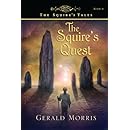 The Squire's Quest (The Squire's Tales) by Gerald Morris -- Middle Grades Fantasy
The latest in the series of Arthurian legends based on little-known French tales. It's ten years after Terence first comes to Camelot and he's still a squire. He's served Arthur faithfully and will continue to stay in Camelot as long as Arthur remains king. Terence feels uneasy because he hasn't had any contact with the Other World for a long time and fears that a wicked enchantment may be preventing the connection and he distrusts Mordred, a young man with a secret past who has come to Camelot in hopes of becoming a knight. King Arthur admires Mordred's diplomatic ways but Terence can't help but feel something is not right. Alexander, Emperor of the Holy Roman Empire comes to Camelot and makes a nuisance of himself by falling in love with Terence's friend Lady Sarah, but also proves himself to be a loyal and just friend. Alexander's brother, Cligés claims his own subplot as the minstrels songs about courtly love influence the young man and his uncle's young bride to act the part of star-crossed lovers to the detriment of the Empire. Terence's adventures takes him all over the Empire and to the Greek underworld before he discovers the fate of his beloved Arthur and Camelot. This book is the ninth in the series and if you haven't read the others, you may not like this one very much. Though Morris has the characters explain past events, the current events are a bit confusing without knowing the characters and their backgrounds. Like the previous books in the series, this one is irreverent and there's lots of bawdy humor and crude jokes. This story is darker and bloodier than all the rest and I didn't care for the battle scenes or the strange mixing of mythologies. What I liked best about the previous books, and what's missing in this one, is the tongue-in-cheek humor that's the hallmark of Morris's writing. I was a little disappointed in this latest (final?) chapter of the Squire's Tales.
The Squire's Quest (The Squire's Tales) by Gerald Morris -- Middle Grades Fantasy
The latest in the series of Arthurian legends based on little-known French tales. It's ten years after Terence first comes to Camelot and he's still a squire. He's served Arthur faithfully and will continue to stay in Camelot as long as Arthur remains king. Terence feels uneasy because he hasn't had any contact with the Other World for a long time and fears that a wicked enchantment may be preventing the connection and he distrusts Mordred, a young man with a secret past who has come to Camelot in hopes of becoming a knight. King Arthur admires Mordred's diplomatic ways but Terence can't help but feel something is not right. Alexander, Emperor of the Holy Roman Empire comes to Camelot and makes a nuisance of himself by falling in love with Terence's friend Lady Sarah, but also proves himself to be a loyal and just friend. Alexander's brother, Cligés claims his own subplot as the minstrels songs about courtly love influence the young man and his uncle's young bride to act the part of star-crossed lovers to the detriment of the Empire. Terence's adventures takes him all over the Empire and to the Greek underworld before he discovers the fate of his beloved Arthur and Camelot. This book is the ninth in the series and if you haven't read the others, you may not like this one very much. Though Morris has the characters explain past events, the current events are a bit confusing without knowing the characters and their backgrounds. Like the previous books in the series, this one is irreverent and there's lots of bawdy humor and crude jokes. This story is darker and bloodier than all the rest and I didn't care for the battle scenes or the strange mixing of mythologies. What I liked best about the previous books, and what's missing in this one, is the tongue-in-cheek humor that's the hallmark of Morris's writing. I was a little disappointed in this latest (final?) chapter of the Squire's Tales.
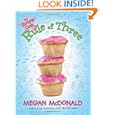 The Sisters Club: Rule of Three by Megan McDonald -- Middle Grades Contemporary Fiction
Sisters, Blisters and Tongue Twisters! The Reel sisters are back in a new book. Oldest sister Alex, the drama queen is excited to try out for the school play but this time she has competition from middle sister Stevie, who has a much better singing voice but hates to act! Stevie is also thinking of entering a cake bake-off. Will she be able to do both? Little sister Joey is obsessed with Little Women and mom is in danger of losing her cooking show, Fondue Sue. The tension rises as the sisters compete against each other for the starring role in Once Upon a Mattress while Joey is placed in the middle. May the best sister win! Stevie shares the ups and downs of sisterhood as Alex's thoughts come in the form of a script and Jo's (don't call her Joey!) as notebook lists and doodles. This charming little book is sort of a contemporary Little Women. It's very much a story about sisters, first and foremost, with the plot secondary in importance. The Reel sisters are incredibly believable and I can relate to sensible Stevie as my sister is a DRAMA QUEEN! I loved Joey's obsession with Little Women and how she's able to relate situations involving her own sisters to the novel. Though this is a sequel, it works fine as a stand-alone novel. The Sisters Club stories are a nice break from the angst and drama of typical pre-teen and teenage literature these days. I highly recommend them and hope to see more about the Reel sisters in the future!
The Sisters Club: Rule of Three by Megan McDonald -- Middle Grades Contemporary Fiction
Sisters, Blisters and Tongue Twisters! The Reel sisters are back in a new book. Oldest sister Alex, the drama queen is excited to try out for the school play but this time she has competition from middle sister Stevie, who has a much better singing voice but hates to act! Stevie is also thinking of entering a cake bake-off. Will she be able to do both? Little sister Joey is obsessed with Little Women and mom is in danger of losing her cooking show, Fondue Sue. The tension rises as the sisters compete against each other for the starring role in Once Upon a Mattress while Joey is placed in the middle. May the best sister win! Stevie shares the ups and downs of sisterhood as Alex's thoughts come in the form of a script and Jo's (don't call her Joey!) as notebook lists and doodles. This charming little book is sort of a contemporary Little Women. It's very much a story about sisters, first and foremost, with the plot secondary in importance. The Reel sisters are incredibly believable and I can relate to sensible Stevie as my sister is a DRAMA QUEEN! I loved Joey's obsession with Little Women and how she's able to relate situations involving her own sisters to the novel. Though this is a sequel, it works fine as a stand-alone novel. The Sisters Club stories are a nice break from the angst and drama of typical pre-teen and teenage literature these days. I highly recommend them and hope to see more about the Reel sisters in the future!
What I've Read This Week . . .
Lark Rise to Candleford by Flora Thompson -- Classic
This is a semi-fictionalized trilogy of English country life in the late 19th century. Young Laura Timmins lives in a hamlet of farm workers but because her father is a stone mason rather than a farmer, she's an outsider looking in, which provides her with a unique perspective with which to observe life in the hamlet, village and nearby market town. The people are poor and live simply but they're a close-knit community, far removed from the village of Candleford and the market town of Candleford Green. Laura shares remembrances of local customs and observations about the simple pre-Industrial life of the hamlet. In the second volume, Laura and her brother have the opportunity to visit their relatives in town for the first time. The people are more well-to-do and think rather highly of themselves, which makes Laura feel uncomfortable, but she discovers a kindred spirit in her uncle, who shares his love of literature with her and helps her widen her horizons. The third volume follows Laura as she leaves childhood behind and goes to work for the postmistress in Candleford Green. This is the most entertaining volume as Laura experiences the beginnings of modern life and the pangs of early adulthood. This book reminded me a lot of Cranford in the way it tells a story of a life that no longer exists. Lark Rise to Candleford doesn't have much of a plot and is a little slow but the simplicity of life is made to be charming and appealing. I think this would be a good book to pick up and put down and pick up again with a nice cup of tea of a leisurely vacation. It's not one to read for quick entertainment purposes. Larkrise to Candleford should be read by those who love English literature and history to discover the peaceful world of 19th century Oxfordshire that no longer exists.
Rise to Candleford by Flora Thompson -- Classic
This is a semi-fictionalized trilogy of English country life in the late 19th century. Young Laura Timmins lives in a hamlet of farm workers but because her father is a stone mason rather than a farmer, she's an outsider looking in, which provides her with a unique perspective with which to observe life in the hamlet, village and nearby market town. The people are poor and live simply but they're a close-knit community, far removed from the village of Candleford and the market town of Candleford Green. Laura shares remembrances of local customs and observations about the simple pre-Industrial life of the hamlet. In the second volume, Laura and her brother have the opportunity to visit their relatives in town for the first time. The people are more well-to-do and think rather highly of themselves, which makes Laura feel uncomfortable, but she discovers a kindred spirit in her uncle, who shares his love of literature with her and helps her widen her horizons. The third volume follows Laura as she leaves childhood behind and goes to work for the postmistress in Candleford Green. This is the most entertaining volume as Laura experiences the beginnings of modern life and the pangs of early adulthood. This book reminded me a lot of Cranford in the way it tells a story of a life that no longer exists. Lark Rise to Candleford doesn't have much of a plot and is a little slow but the simplicity of life is made to be charming and appealing. I think this would be a good book to pick up and put down and pick up again with a nice cup of tea of a leisurely vacation. It's not one to read for quick entertainment purposes. Larkrise to Candleford should be read by those who love English literature and history to discover the peaceful world of 19th century Oxfordshire that no longer exists.
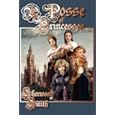 A Posse of Princesses by Sherwood Smith -- YA Fantasy
This story is set in a land where powerful magic is common and though the heroine, Rhis, Princess of the small kingdom of Nym, shows a great aptitude for magical learning, she prefers to sit in her tower room reading old ballads and dreaming of romance and adventure. When an invitation comes to attend a party with the Crown Prince of Vesarja and other young people, Rhis believes this is her chance to escape her stuffy sister-in-law/tutor and small mountain kingdom to have the adventure she's always dreamed of. Rhis is unprepared for court life but her sheltered upbringing allows her to make friends with everyone, from her sister-by-marriage Shera, princess of Gessam; Tanivia, a wild highland princess; Youzhou, the prince's cousin and especially the prince's charming scribe, Dandiar. The party is also attended by Iardith, the perfect princess, who has her sights set on the prince. Rhis and Iardith don't get along but when another party guest abducts Iardith, the time comes for Rhis and her friends to set aside their personal feelings and rush off into danger to rescue their fellow princess. Rhis finds the adventure of a lifetime and even discovers true love. This is a charming adventure story for girls without many angsty undertones or wickedness. Rhis is a delightful heroine and she is the perfect princess. I especially like the other princesses from foreign lands and their unusual behavior. My favorite is Taniva, the barefoot highland princess. The hero is funny and charming as well as intelligent, like the heroine, so they are a good match. I admire the princesses for being quick thinking and springing into action on their own. What's lacking in this story is the great romantic build-up that Smith created so well in Crown Duel. The romance seems kind of rushed and anti-climatic after the great adventure. The story took so long to get going so by the end I felt like the author was rushing to finish. She also borrows some elements from previous stories. The illustration of the princesses on the dust jacket is totally wrong. Two of them have skin in shades of brown, one yellow and one unknown. Overall, I think this book is great for younger girls who like to read about strong, intelligent princesses. Fans of Gail Carson Levine and Karen Cushman will love this one.
The Lady Disguised by Elizabeth Mansfield -- Regency Romance
When her eight-year-old brother Stanley goes missing, Miss Ada Farrington fears he has been kidnapped by Gypsies and she is the best person to find him. Disguised as a boy, she sets out on an adventure through the country in search of her much-adored brother. Along the way she meets the handsome, charming rake Derek Rutledge, Viscount Esterbrook. Guessing her secret, Derek is captivated by Ada and endeavors to assist young "Addie" on his search. Their quest takes them back to London where "Addie" meets Derek's matchmaking mama and tries to navigate the social waters of Polite Society while searching for Stanley in locations that aren't fit for a gentleman to see, let alone a well-bred young lady. Adventure, danger and near heartbreak are imminent as Ada and Derek grow closer to each other. This is a light, quick read. Ada is young and naive but not foolish and Derek behaves like the perfect gentleman but possesses a sense of humor that makes him a most charming hero. I can't stand lisping children in novels so I didn't feel as sorry for Stanley as I should have. His fate kept me guessing (and I guessed wrong) and I learned about lost/forgotten children in 1816, a subject which is truly horrible and unimaginable. The seriousness of the adventure kept this novel from being total fluff and balances out the romance nicely. I enjoyed this one and would like to read more of Mansfield's novels.
A Posse of Princesses by Sherwood Smith -- YA Fantasy
This story is set in a land where powerful magic is common and though the heroine, Rhis, Princess of the small kingdom of Nym, shows a great aptitude for magical learning, she prefers to sit in her tower room reading old ballads and dreaming of romance and adventure. When an invitation comes to attend a party with the Crown Prince of Vesarja and other young people, Rhis believes this is her chance to escape her stuffy sister-in-law/tutor and small mountain kingdom to have the adventure she's always dreamed of. Rhis is unprepared for court life but her sheltered upbringing allows her to make friends with everyone, from her sister-by-marriage Shera, princess of Gessam; Tanivia, a wild highland princess; Youzhou, the prince's cousin and especially the prince's charming scribe, Dandiar. The party is also attended by Iardith, the perfect princess, who has her sights set on the prince. Rhis and Iardith don't get along but when another party guest abducts Iardith, the time comes for Rhis and her friends to set aside their personal feelings and rush off into danger to rescue their fellow princess. Rhis finds the adventure of a lifetime and even discovers true love. This is a charming adventure story for girls without many angsty undertones or wickedness. Rhis is a delightful heroine and she is the perfect princess. I especially like the other princesses from foreign lands and their unusual behavior. My favorite is Taniva, the barefoot highland princess. The hero is funny and charming as well as intelligent, like the heroine, so they are a good match. I admire the princesses for being quick thinking and springing into action on their own. What's lacking in this story is the great romantic build-up that Smith created so well in Crown Duel. The romance seems kind of rushed and anti-climatic after the great adventure. The story took so long to get going so by the end I felt like the author was rushing to finish. She also borrows some elements from previous stories. The illustration of the princesses on the dust jacket is totally wrong. Two of them have skin in shades of brown, one yellow and one unknown. Overall, I think this book is great for younger girls who like to read about strong, intelligent princesses. Fans of Gail Carson Levine and Karen Cushman will love this one.
The Lady Disguised by Elizabeth Mansfield -- Regency Romance
When her eight-year-old brother Stanley goes missing, Miss Ada Farrington fears he has been kidnapped by Gypsies and she is the best person to find him. Disguised as a boy, she sets out on an adventure through the country in search of her much-adored brother. Along the way she meets the handsome, charming rake Derek Rutledge, Viscount Esterbrook. Guessing her secret, Derek is captivated by Ada and endeavors to assist young "Addie" on his search. Their quest takes them back to London where "Addie" meets Derek's matchmaking mama and tries to navigate the social waters of Polite Society while searching for Stanley in locations that aren't fit for a gentleman to see, let alone a well-bred young lady. Adventure, danger and near heartbreak are imminent as Ada and Derek grow closer to each other. This is a light, quick read. Ada is young and naive but not foolish and Derek behaves like the perfect gentleman but possesses a sense of humor that makes him a most charming hero. I can't stand lisping children in novels so I didn't feel as sorry for Stanley as I should have. His fate kept me guessing (and I guessed wrong) and I learned about lost/forgotten children in 1816, a subject which is truly horrible and unimaginable. The seriousness of the adventure kept this novel from being total fluff and balances out the romance nicely. I enjoyed this one and would like to read more of Mansfield's novels.
Happy New Year
The Battle for Christmas
by Stephen Nissenbaum

Happy New Year faithful blog readers (or am I talking to myself?)! As the new year begins and the Christmas season winds down, I want to tell you about a fascinating book I read recently. It's called The Battle for Christmas.
The book chronicles the early history of Christmas, from the 4th century A.D., when the Roman emperor decided that instead of worshiping the sun as pagans were doing in a festival called Saturnalia, Romans would now celebrate the birth of THE Son (Jesus) and that since the Bible doesn't provide a date for the birth of Christ, then they would celebrate on December 25th, the date the solstice happened to fall on that year.In early modern England, winter was a time of little work and much feasting. The crops were harvested, animals slaughtered and beer and wine fermented. The Christmas season was filled with wild, Las Vegas Mardi Gras type parties where lower class people would beg money from their betters and if they didn't receive it, cause trouble. There was LOTS of drinking and some cross-dressing and much excess.
The Puritans of the mid-17th century objected to Christmas for two reasons, 1) there was no textual evidence of the date on which Christ was born and 2)they were disgusted by the "public wantonness" displayed by the lower orders and therefore, they outlawed Christmas. English holiday reveling crossed the Atlantic as did strict Puritan beliefs in early New England. Puritans tried to control the public wantonness but did not object if Christmas was kept quietly in one's own home. Some religious groups in New England celebrated Christmas in the religious sense. Other colonies enjoyed the reveling and feasting and even slaves enjoyed some time off from their labors.
By the early nineteenth century, some people were celebrating the New Year with a family dinner. Then some wealthy New Yorkers helped begin the Christmas that most of us are familiar with. Washington Irving wrote about an idyllic Christmas celebration in old England, something that never actually happened! Clement Clarke Moore wrote his famous poem "A Visit From St. Nicholas" ('Twas the Night Before Christmas) and John Pintard, of the New York Historical Society revived the old Dutch custom of St. Nicholas bringing toys and sweets to children.
The Christmas tree became popular by word-of-mouth, based on one German immigrant's surprise for his son. Christmas trees were small, table top firs hung with candles and fruit and small toys.
By the mid-19th century, many people were familiar with Santa Claus or some other person bringing gifts for good children, but Santa was a far cry from the kindly old man we know today. He sometimes took on the form of a black faced creature or left birch rods for the parents of bad children to whip them. Christmas was a time of fear for the lower class still enjoyed revelling in the streets and the rich feared assault by the party goers and sought to give the lower orders a model for good behavior, thus Christmas became a family centered holiday.
The book also discusses how A Christmas Carol brought about feelings of charity at Christmas town and how the wealthy took a paternalistic attitude towards the poor.
The final chapter deals with African-American traditions in the Antebellum South. Class roles were sometimes reversed and slaves were allowed to beg for gifts and money.
Nissenbaum's overall argument is that as people bettered themselves and became more refined, they sought to distance themselves from the superstitious and wild behavior of the past. The Industrial Revolution made more materials goods possible and created a middle class which contributed to the commercialization of Christmas.
I enjoyed reading this book and I learned a lot from it. It's well-researched and uses many primary source accounts to back up statements. The pictures are fun to look at to see how Christmas traditions changed to the more familiar ones we know today. This book is well worth a look.














